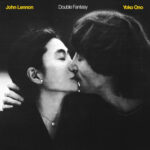John Fogerty, a true icon of American rock music, recently delivered an unforgettable 90-minute performance at Wolf Trap, reminding everyone why his music, especially with Creedence Clearwater Revival, remains so deeply loved. The energy in the audience was palpable, the most vibrant I’ve ever witnessed at this venue. Even with a minor foot issue keeping me somewhat grounded, the sheer power of Fogerty’s music compelled me to stand and celebrate a genuine legend.
 John Fogerty Live in Concert at Wolf Trap
John Fogerty Live in Concert at Wolf Trap
Fogerty’s performance was nothing short of electrifying. At 78, his vitality is remarkable, as he commanded the stage with dynamic movement throughout the concert. Engaging a massive crowd like Wolf Trap’s is no small feat, but Fogerty’s mastery was evident as he had the audience completely captivated, hanging on every note and word.
It’s almost a challenge to decide what to highlight when writing about John Fogerty. His songs are universally recognized, transcending generations and musical preferences. From constant radio airplay since the late 60s to iconic placements in global pop culture moments, like “Fortunate Son” in the Vietnam War scenes of Forrest Gump, Fogerty’s music is deeply embedded in our collective consciousness. With such an omnipresent figure, what more can be said about a John Fogerty Concert?
Perhaps the best approach is to reflect on a personal connection to Fogerty’s timeless catalog. Growing up, my soundtrack was often the classic hits of the 50s and 60s, courtesy of my parents and the ever-present Oldies radio stations. Creedence Clearwater Revival’s anthems were in constant rotation. I also vividly remember Fogerty’s 1985 comeback album, Centerfield, and specifically the music video for the title track, a catchy tribute to baseball, which I’d catch on Saturday morning music video shows.
Like many teenagers, I went through a phase of distancing myself from the music my parents loved, including the sounds of the 50s and 60s. During my early driving years, contemporary and classic rock stations became my preferred listening, leaving the Oldies behind. Music took a backseat through college and grad school, only to re-emerge as a central interest around 2015. Revisiting the music of the 50s and 60s with a fresh perspective, I rediscovered its brilliance. John Fogerty’s enduring presence in music is no accident; it’s a testament to the sheer quality of his work.
Born in Berkeley, California, in 1945, Fogerty’s formative years were spent in nearby Cerrito, a more rural setting in Northern California. For a comprehensive look into his life, from childhood to his illustrious career, his memoir, Fortunate Son, is highly recommended. His musical journey began early, playing guitar in local bands by 1959. The 1960s saw the genesis of Creedence Clearwater Revival, initially named The Golliwogs under their first record deal—a name, as Fogerty humorously acknowledged at the concert, resulting from “very un-PC research.” They released several singles as The Golliwogs, including “Fighting Fire,” which Fogerty played at Wolf Trap, before their breakthrough.
Creedence Clearwater Revival’s reign was meteoric, ignited by “Suzie Q” in 1968. Fogerty recounted after that initial hit, “I realized I was a one-hit wonder,” fueling an incredibly productive period. This intense creative burst resulted in eight gold albums. However, as Fogerty shared with the audience, “it all came crashing down” in 1972, as internal conflicts led to the band’s disbandment.
For many years following CCR’s breakup, Fogerty refrained from performing their iconic hits due to a contentious publishing rights situation. He explained that his record deal relinquished rights to songs “I hadn’t even written yet.” This tour marks a celebratory reclaiming of his song ownership, a victory he attributes to his wife, Julie, “who wouldn’t take no for an answer.” He dedicated “Joy of My Life,” a song written for her, during the Wolf Trap John Fogerty concert.
The legal battles with Fantasy Records, Creedence’s former label, were long and arduous. Famously, Fantasy even sued Fogerty for self-plagiarism, claiming his solo song “The Old Man Down the Road” (Centerfield) mirrored CCR’s “Run Through the Jungle.” Fogerty ultimately prevailed in a Supreme Court case that epitomized his resilience.
John Fogerty’s influence on popular music is undeniable. His songs have been covered by a diverse range of artists, from heartland rockers like Bruce Springsteen and Bob Seger (genres resonating with his solo work) to punk band Minutemen (whose late frontman D. Boon was Fogerty’s cousin) and alt-rock artist Julianna Hatfield. Fogerty’s musical DNA is woven into the fabric of roots rock since the 70s.
Family was a heartwarming element of the Wolf Trap John Fogerty concert. His sons, Shane (his spitting image) and Tyler, are part of his band and also opened the show with their band, Hearty Har.
The concert began with a video clip of Fogerty providing context to his music and the journey to regain control of his song catalog. When he hit the stage, it was an immediate dive into the hits: “Bad Moon Rising,” “Up Around the Bend,” “Green River,” and “Born on the Bayou.” After “Bayou,” Fogerty shared the story of his cherished Rickenbacker guitar. Lost for 44 years after he gifted it to a young fan in 1972 when CCR dissolved, his wife Julie miraculously tracked it down.
Next in the set was “Who’ll Stop The Rain?”, with the line “went down to Virginia” drawing enthusiastic cheers from the Virginia audience. “Lookin’ Out My Back Door” followed, then “Rock and Roll Girls,” a highlight from his solo work. He then played The Golliwogs’ “Fight Fire,” and “Lodi,” a song set in Ohio, my home state. “Run Through The Jungle” was powerfully accompanied by visuals of American soldiers in Vietnam. After “Effigy,” the setlist moved to “Keep On Chooglin’.” The meaning of “chooglin’” might be elusive, but the sheer sound of the word in the music is undeniably infectious. “Have You Ever Seen The Rain?” transitioned into “Centerfield,” backed by classic black-and-white baseball footage.
The main set concluded with “Down on The Corner,” “The Old Man Down The Road,” and the explosive “Fortunate Son.” For the encore, John Fogerty and his band returned for “Travelin’ Band.” The night culminated with Hearty Har rejoining them onstage for a rousing rendition of “Proud Mary,” bringing the John Fogerty concert to an electrifying close.
Anyone who loves rock and roll would be deeply moved by this passionate and energetic John Fogerty concert. Rock & Roll Hall of Famer is a deserving title, but it still doesn’t fully capture the monumental impact John Fogerty and his songs have had. This was a performance by one of rock’s most significant figures, still at the peak of his powers.


